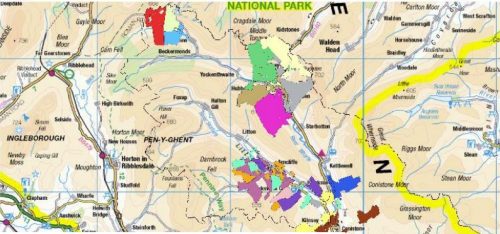Ref: CSFF030009
Lead: Rita Mercer, rita.mercer@yorkshiredalesrivertrust.com or Dan Turner, dan.turner@yorkshiredalesriverstrust.com
Group members: 16
Length of agreement: 3
Area of group (Hectares): 6456
Priorities: to explore how to deliver NFM benefits – the training will also give a better understanding of the CS priorities, helping to make more informed choices about new applications. This group has holdings throughout the upper Wharfe catchment.
Biodiversity – improved maintenance/restoration of key habitats and species – blanket bog, upland heathland and hay meadows, ancient/native woodland, upland flushes, fens and swamps, riparian habitats, breeding wader habitat.
Improved management will provide a more varied topography, creating extra roughness in the catchment and slowing floodwaters. Species-rich swards have been shown to accumulate more soil organic matter, enhancing their abilities to store water.
Water quality – reduction of sediment and phosphate is a priority in the catchment. The group will learn about the role of sedimentation in phosphate loading and consequent impacts on water quality. Events will be planned to pass on the latest thinking and techniques to reduce surface run-off by better soil management, increasing infiltration and installing features to intercept flow pathways.
Historic Environment – members will learn about features in the historic environment which could be potentially damaged by NFM work e.g. sub-soiling to reduce compaction, so that any work which is planned does not inadvertently damage the outstanding historic interest of the dale.
Multiple benefits –Training will give members a holistic view of the habitats on their holdings and in the wider catchment, emphasising how each plays its part in the reduction of flood risk, improvement of water quality, enhancing resilience to climate change e.g. native woodland planting in the upper reaches slows the flow of water, increases infiltration, reduces sedimentation into becks, links and extends priority woodland habitat, encouraging expansion of local black grouse populations.

